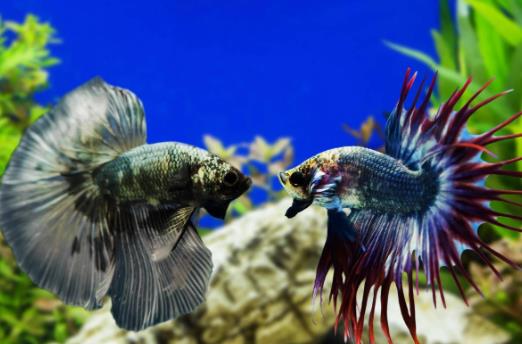The water quality requirements of bettas vary by species, but the core indicators include pH level, hardness, dissolved oxygen, and water source treatment methods. Below are specific classifications and recommendations:

pH Range
Chinese bettas (e.g., Round-tailed Betta, Paradise Fish): Adapt to a pH of 6.5–7.5, with neutral to slightly alkaline conditions being optimal.
Siamese fighting fish (e.g., Halfmoon Betta): Prefer a pH of 6.5–7.2; a slightly acidic environment enhances their coloration and vitality.
Special varieties: Spiketail bettas thrive in weakly alkaline water (pH 6.8–7.2), while Halfmoon bettas can tolerate a slightly wider range (pH 6.5–7.5).
Water Source Selection and Treatment
Tap water: Needs to be left to stand for 2–3 days or aerated for 24 hours to remove chlorine. In northern regions with highly alkaline water, using a water conditioner is recommended.
Purified water/mineral water:
Yibao (pH 6.5–6.8) is suitable for Halfmoon bettas that require weakly acidic conditions.
Nongfu Spring (pH 6.8–7.2) is more appropriate for weakly alkaline species like spiketail bettas.
Notes: Long-term use of purified water requires mineral supplementation to avoid insufficient water hardness.
Water Quality Stability Management
Water change frequency: Replace 1/3–1/4 of the water weekly. The temperature difference between new and old water should not exceed 2°C, and sudden pH changes must be avoided.
Adjustment tools: Almond leaves can naturally lower acidity (by approximately 0.5 pH units), making them ideal for Siamese fighting fish; humic acid is more effective for significant acid adjustments.
Dissolved oxygen requirements: In artificial breeding, dissolved oxygen should be maintained at ≥5mg/L, which can be achieved using sponge filters or water filters.
Synergy Between Hardness and Temperature
Hardness range: 5–15°dGH (German hardness) is ideal; excessively high hardness may cause metabolic stress.
Temperature correlation: Bettas have the best metabolism at 24–28°C. For low temperatures (<20°C) or high temperatures (>30°C), water quality management strategies need to be adjusted accordingly.
